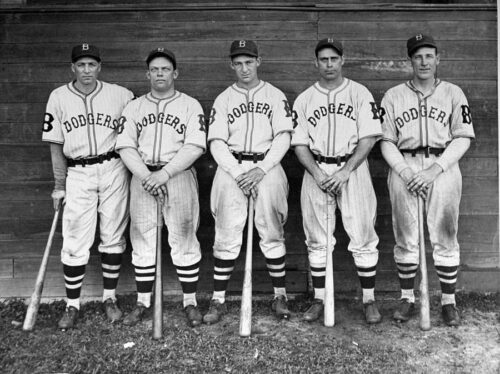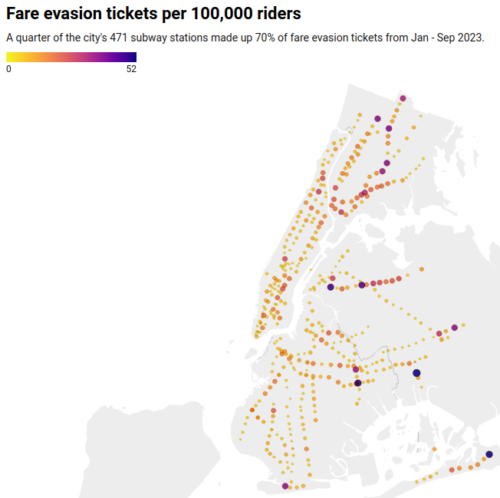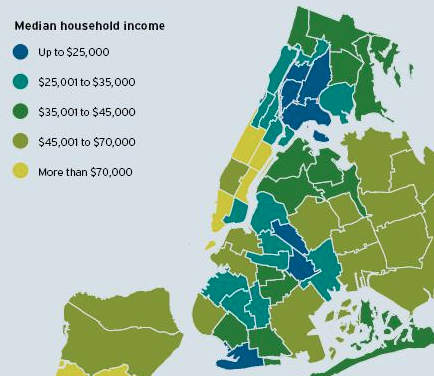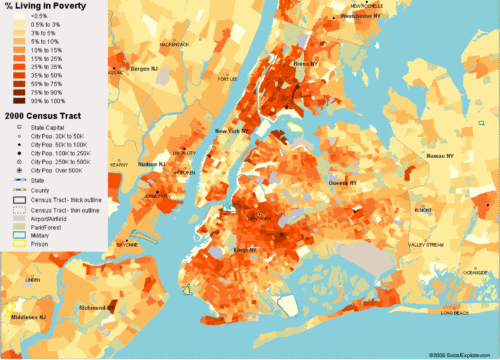Fare dodgers. They’re the worst. Imagine a city where people were even sporting shirts celebrating the art of dodging public transportation. The nerve!

Anyway, let’s run some new numbers published by Gothamist in an article about Subway crime.
100,000 dodger tickets are said to have been issued at $100/each, which would mean $10,000,000 in fines gathered for NYC.
Wow. I mean 10 MILLION is a lot of lettuce. Who could argue with this tough-on-crime position (that seems to be targeting very specific neighborhoods with some very particular attributes)?



Who wants to guess whether NYC used the poverty map to deploy police officers, like handing out fines for being poor?
Now let us now see how much the city spent on this program…
Oh. Oh no.
No, this can’t be right.
More than 1,000 additional police officers were deployed in the subways each day as part of the plan, which Gothamist reported cost the city and state an additional $151 million in overtime.
Ok, so NYC lost $141 MILLION dollars to chase fare evasion. Doesn’t that seem incredibly, even for NYC, stupid and backwards?
Howabout putting $141 million into infrastructure upgrades instead? Make payment options easier even and offer a monthly multi-system package covering all rail? Maybe then people would gladly pay to ride? Just some basic economic nudge theory.
That’s a good theory but here comes science to the rescue!
It turns out NOT chasing Dem Bums is the right thing to do according to the actual numbers. Here’s some ground-breaking research from 2016:
Ignoring Fare Evaders Can Make Mass Transit Faster—And Richer
More and more cities are emphasizing ease of access over making every last rider pay.
The article goes on to state the obvious, although they call it counter-intuitive for some reason.
“Essentially what we were trying to do is keep the honest folks honest,” says Julie Kirschbaum, who oversees the agency’s modernization efforts. And do just enough to keep the bandits on their toes.
It worked. In tourist-heavy areas, the system’s bus and streetcar dwell times per stop dropped 13 percent. Before, each person getting on or off needed 6.8 seconds. Now, they take 3. 5 seconds. Multiply those moments of savings by every rider boarding and alighting at every stop on every bus line, and you’ve got hundreds of hours of extra time per year. All from opening up the back doors.
The cheaters are still along for the ride, according to Muni’s latest data. But the agency’s surveys found fare evasion dropped from nearly 10 percent in 2009 to 7.9 percent in 2014. The resulting estimated loss in revenue fell from $19.2 million to $17.1 million.
That tracks with Oslo’s experience, where the public transit system also liberated all metros from fare gates. By making it easier for riders to pay for tickets through their phones, the system halved its fare evasion rates, to five percent. Trains are moving faster, too, which encourages more people to use the service. The agency has calculated the cost of slower operations versus what it’s losing through fare evasion. It makes more financial sense to let the cheaters cheat, it says.
It makes more sense to open the pod bay doors so people can get where they need to go? Color me surprised.
NYC seems to be trying so hard right now to look like a HAL 9000 in charge, they seem to have forgotten how the plot turns out for an autocratic enforcement-obsessed robot.
